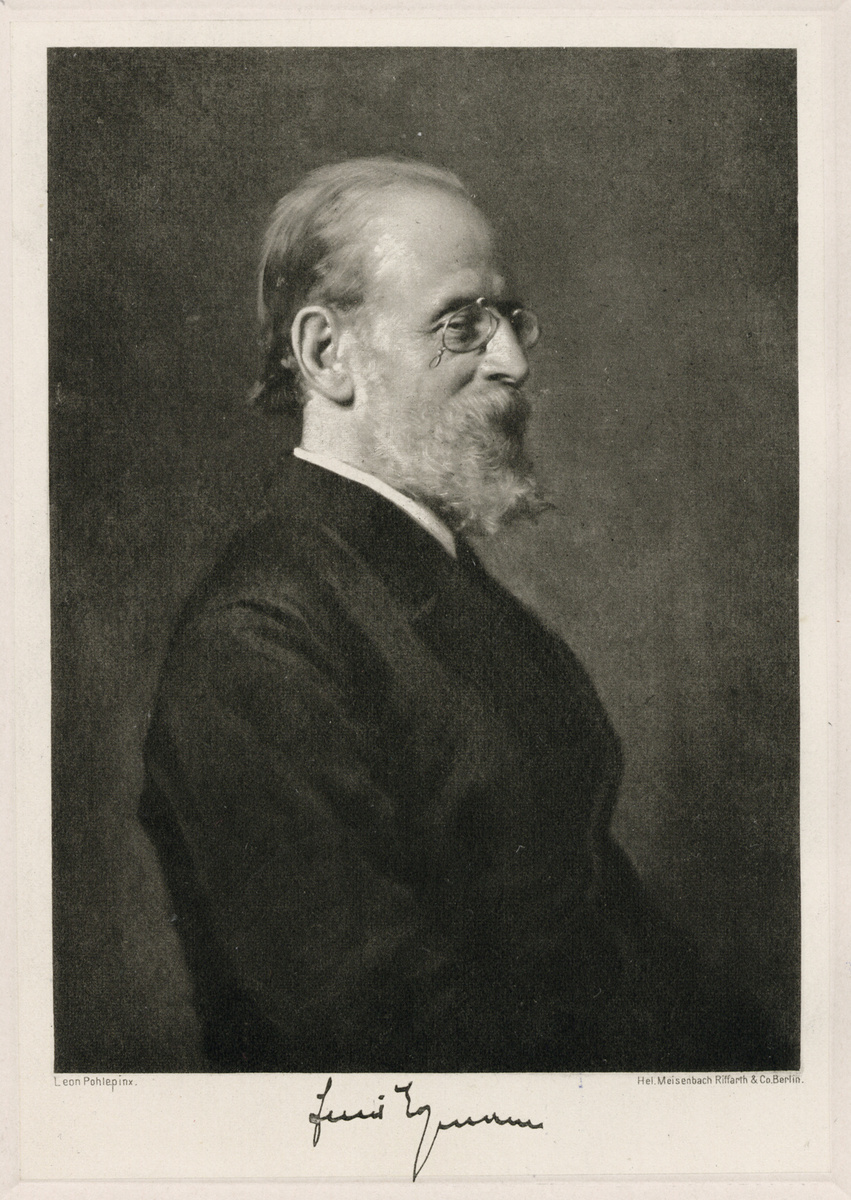Source

Source: Leon Pohle, portrait of Emil Lehmann (1894). Frontispiece in: Emil Lehmann, Gesammelte Schriften, 1899. Dresden: SLUB. Deutsche Fotothek, http://www.deutschefotothek.de/documents/obj/90027013
Emil Lehmann (1829–1898) was a Dresden lawyer and the first Jew to be elected (in 1865) to Dresden’s municipal council. With brief interruptions, he held that seat until 1883, serving much of this time as first or second vice-president of that chamber. From 1875 to 1881, he also held a seat in the lower house of the Saxon state parliament as a member of the Progressive Party. The son of a Dresden merchant, Lehmann could count among his ancestors court Jews and actors brought to Dresden by August the Strong in the eighteenth century. Lehmann attended the Jewish Community School and then, from 1842–48, the Kreuzschule in Dresden. In 1848, he moved to Leipzig, where he studied jurisprudence until 1851. Returning to Dresden, he initially concentrated on writing for the left-liberal Sächsische Dorfzeitung and other journals, but from 1863 on he practiced law in the Saxon capital. With his colleagues Bernhard Beer, Zacharias Frankel, and Wolf Landau, Lehmann turned his attention to the struggle for Jewish rights from the mid-1860s onward. He was elected head of Dresden’s Jewish community [Gemeinde] on February 9, 1869. His pamphlet “Hear, Israel!” led to the founding of the League of German-Jewish Communities in 1872. A proponent of Jewish assimilation, his efforts had already contributed substantially to the (formal) emancipation of the Jews in Saxony on December 3, 1868—that is, before passage of the Law of Religious Freedom by the North German Reichstag (July 3, 1869). He also supported the founding of the Central Association of German Citizens of the Jewish Faith in 1893.
Even though Lehmann was a life-long advocate of German-Jewish symbiosis—taking Gabriel Riesser as his model—his lot was not an easy one. The Kingdom of Saxony was home to some of Imperial Germany’s most rabid antisemites. Lehmann was heavily engaged in the pamphlet literature that flourished in the years 1878-1882 as the result of Heinrich von Treitschke’s polemics against the Jews, the subsequent “Berlin Antisemitism Conflict,” and the agitation in Saxony that stemmed not only from members of Adolf Stoecker’s Christian Social Party but also from the more radical antisemites organized in local “Reform Associations.” Initially, Lehmann’s writings displayed argumentative brilliance, but in later years they were marked by increasing bitterness—and with good reason. In 1883, Lehmann lost his seat in Dresden’s city council at the hands of a coalition of antisemitic “Reformers” and Conservatives. Dresden’s antisemites rejoiced that they had purged the municipal parliament of its last Jew.

Source: Leon Pohle, portrait of Emil Lehmann (1894). Frontispiece in: Emil Lehmann, Gesammelte Schriften, 1899. Dresden: SLUB. Deutsche Fotothek, http://www.deutschefotothek.de/documents/obj/90027013